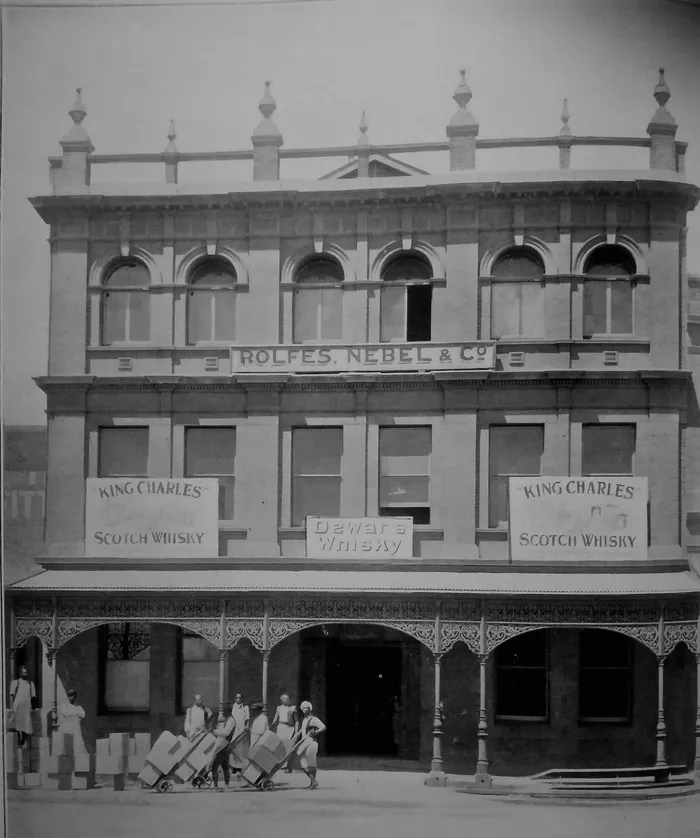The strange disappearance of Durban's top wine merchants
Then & Now

The original Hamson Building at 353 Smith street was the home of Rolfes, Nebel & Co.
Image: Supplied
Our picture of old Durban this week features the Hampson’s Building at 353 Smith Street, today Anton Lembede Street, which was occupied by a prominent Durban wine merchant.
Rolfes, Nebel & Co specialised in the import of wines, ales, spirits and cigars. They held agencies for brands such as Dewars, Ushers and Walker’s whiskies, as well as representing leading producers of French and German wines and Champagne. They were also the South African agents for Sun Lager beer.
The firm was founded in 1882 in Paris and Kimberley, but two years later, the European operations were moved to London. After the discovery of gold in Johannesburg in 1886, they extended their business to the Transvaal where it grew rapidly - those mining towns were nothing if not hard drinking. A branch was opened in Port Elizabeth in 1884 and extended in 1890 for the purpose of supplying the Cape Colony, and what was then the Orange Free State, Bechuanaland and Rhodesia.
In 1898 they opened a branch in Durban to supply Natal and the Transvaal. They had two stores in Queen Street, but their main office was on the ground floor of the Hampson Building at 353 Smith Street.

The site of the old Union club at 353 Anton Lembede Street today. The club occupied the top three floors of this building which was erected in the 1950s.
Image: Mark Levin
Once business returned to normality after the Anglo Boer War in 1902, one of their most successful travellers or salesmen was HS Crompton. He had arrived in Natal in 1899 and joined the firm JM Millar & Co. When this firm was bought out by Rolfes, Nebel & Co in 1902, Crompton’s services were retained. He was a keen cricketer playing for Queens Park cricket club.
During the first World War the company was badly affected by the anti-German riots that broke out in May 1915 after the Cunard liner RMS Lusitania was sunk by a German U-boat. Riots broke out in Durban, Johannesburg and Kimberley. In each town, the businesses of the Rolfes, Nebel and Company were looted and then set on fire. In Durban, their premises in Cato Street and at 420 Smith Street were destroyed by fire.
This was perhaps not surprising as the business had been formed by Werner Rolfes and his brothers George and Carl, together with Rudolf Nebel, all from Hanover in Germany. In 1888, Werner had married the eldest daughter of Baron Arnold von Sachs of Wiesbaden. Together they had four children, one of whom, Hermann, had also become a partner by 1915. The firm had also entered the fertilizer industry and opened further branches in Bloemfontein and Bulawayo. It probably did not help the Werner Rolfes had been appointed German consul for Griqualand West in 1889 and for Port Elizabeth in 1902.
The loyalty of the firm does not appear to have been the issue, nevertheles, it had disappeared in the 1920s. Possibly it closed down or was sold to one of the other leading liquor merchants in Durban.
Even before the war, the company had moved to 420 Smith Street. Hampson Building was acquired by the Union Club which used the first floor and leased out the ground floor. It was renamed the Union Club building.
In 1951 the Hampson Building was demolished and replace by the current 10-storey building. The club leased out the first six floors and reserved for its own use the seventh to tenth floors until the club itself disbanded.